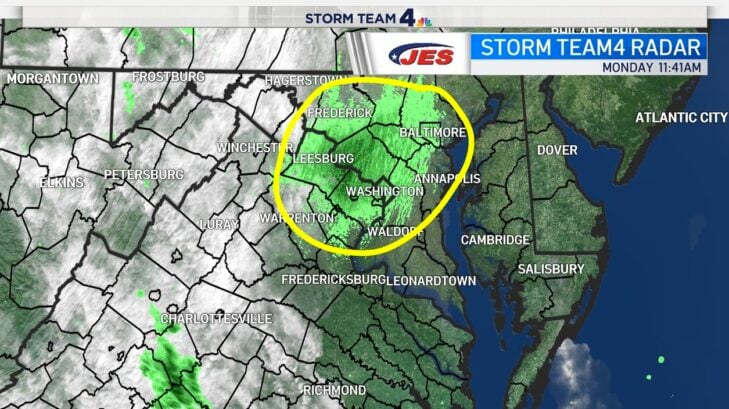The 17-year swarm of “Broad X” cicadas had the meteorologists confused after they started showing up on a weather radar scanner in Virginia.
“THIS is not rain, not ground clutter,” NBC meteorologist Lauryn Ricketts tweeted. “So likely CICADAS [are] being picked up by the radar beam.”
THIS is not rain, not ground clutter (the radar beam picking up objects close the radar site –which is in Loudoun County)…. the Hydrometeor Classification algorithm identifies this as biological in nature..so likely CICADAS being picked up by the radar beam… pic.twitter.com/zTLCzynz5D
— Lauryn Ricketts (@laurynricketts) June 7, 2021
Virginia-based meteorologist for the National Weather Service, Kyle Pallozzi, believes that’s exactly what it is. There is a weather radar located in Sterling, Virginia which is exactly where the cicadas were picked up.
“So the beams are picking up the newly emerged cicadas on the ground near the Sterling radar, but fewer and fewer cicadas are identified as the beam’s height increases away from the ground, which is why the blip on the map is so close to the radar itself,” Kyle told Insider.
Even though the cicadas are showing up on the radar, Kyle says it’s easy to defferentiate the difference between the bugs and actual weather events. They use the “Hydrometeor Classification Algorithm,” and it can decipher the difference between rain, hail, snow, something biological, or more.
The National Weather Service in Baltimore shared a photo on Twitter showing “a lot of fuzziness,” attributing the “fuzziness” to the cicadas.
You may have noticed a lot of fuzziness (low reflectivity values) on our radar recently. The Hydrometeor Classification algorithm shows much of it to be Biological in nature. Our guess? It’s probably the #cicadas. pic.twitter.com/i990mEBJnl
— NWS Baltimore-Washington (@NWS_BaltWash) June 5, 2021
According to Jon Erdman, a senior meteorologist at The Weather Channel, the radar can be corrected to not pick up the cicadas depending on how high the cicadas can fly.



